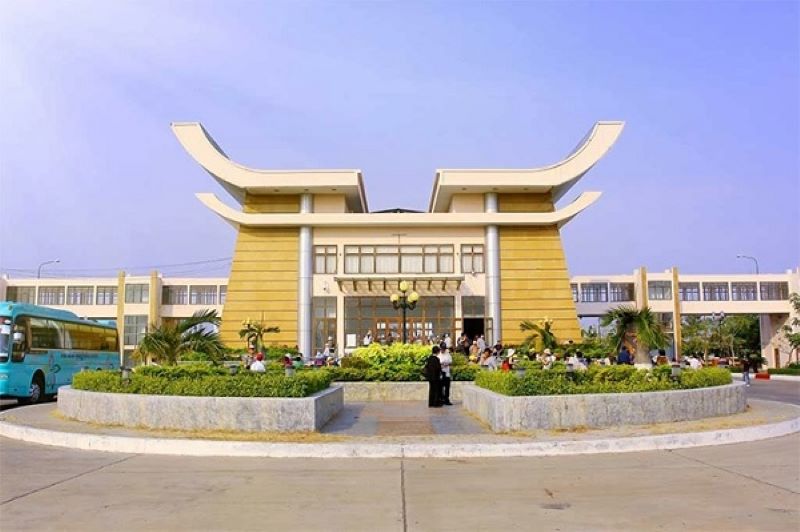Promoting Border-Gate Tourism in Vietnam
Vietnam's tourism stimulus is currently focusing heavily on aviation and shipping markets, while largely overlooking the potential of cross-border tourists.

A member of the Tourism Advisory Board (TAB), Dr. Luong Hoai Nam, suggests implementing the idea of a trans-Indochina visa. This would allow for visa-free travel throughout Indochina, as well as open borders with Laos, Cambodia, and Thailand. This would not only attract visitors from these neighboring countries, but would also assist Vietnam in capitalizing on more international tourist flows.
Unexplored potential: the untapped market
There has been a sudden increase in road border gates along the East-West economic corridor, which includes Vietnam, Laos, Thailand, and Cambodia, particularly near key tourist provinces and cities such as Lao Bao (Quang Tri), Mong Cai, Hoanh Mo, Bac Phong Sinh (Quang Ninh), and Tay Ninh, which has two international border gates and over a dozen sub-border gates. On the other hand, despite its importance in the CLMV sub-region (Cambodia, Laos, Myanmar, and Vietnam), the country's tourism industry is rarely mentioned.
Many localities benefit from favorable conditions for tourism development as a result of close and consistent links with neighboring provinces based on development cooperation and economic trade. As a result, several provinces are shifting their focus to fully capitalize on the benefits of the border in order to attract tourists from neighboring countries.
The representative of Tay Ninh province's Department of Culture, Sports, and Tourism notes that the distance between Tay Ninh and Ho Chi Minh City, the country's leading tourist center, is only 100 kilometers, which is a disadvantage that has a significant impact on the province's ability to attract tourists. As a result, the province is focusing on increasing the number of international visitors, particularly those from Cambodia.
Pham Ngoc Thuy, Director of Tourism in Quang Ninh, believes that over the years, Quang Ninh province (Vietnam) and Guangxi province (China) have developed comprehensive exchange cooperation in many areas, including tourism. This is currently the country's and Quang Ninh's largest international tourist market.
Every year, the Lao Bao border gate welcomes hundreds of thousands of cross-border visitors to popular tourist destinations like Da Nang and Hue. For many years, the number of international visitors coming from Thailand through this border gate has accounted for the majority, but there has not been a significant increase, partly because they are so familiar and partly because Chinese tourists have "blown up" to account for the majority in recent years.
The potential for tourism development from this cross-border tourist market is significant, but Vietnam has yet to fully capitalize on it.
Major Infrastructure and Policy Challenges
Dr. Luong Hoai Nam admitted that, despite the fact that TAB has little data and research on this customer, the potential of border customers has not been fully realized due to major infrastructure and policy challenges.
According to Dr. Luong Hoai Nam, road tourism would thrive if border gates were open and free for people and tourists to travel between countries without visas, and for their cars to pass through smoothly.

However, several obstacles are impeding the growth of road tourism:
First, immigration policies have several flaws, such as lengthy immigration procedures, groups having to meet numerous conditions and complete a variety of documents in order to be cleared, and entry procedures to Vietnam requiring prior application. There are also procedures for applying for a license from the Ministry of Transport.
Second, the infrastructure is still limit ed and insufficient for the development of road tourism. The roads that serve the border gates connect directly to popular tourist destinations, but travel time is not guaranteed.
Third, the products remain static and lack the ability to change and refresh. Meanwhile, tourists from neighboring countries have begun to visit, shop, and entertain in Vietnam, staying longer than before.
Fourth, according to tourism experts and provincial tourism promotion centers, there is still a high demand for border crossing tourists to Vietnam who are not ill. However, the type of medical tourism in Vietnam is insufficient and has not been heavily invested in or developed.
Recommendations from Businesses
Mr. Truong Duc Hai, Director of Hon Ngoc Vien Dong Tourism Company, has stated that medical examination and treatment tours currently last for 3-4 days, or even longer. These medical tours for Cambodian tourists are mainly organized and connected by some Cambodian people living in Ho Chi Minh City. In Vietnam, a more professional product line and organization are required for medical tourism.

Domestic tourism products, according to businesses, need more investment and promotion to welcome this influx of tourists. As a result, it is critical to develop a national overall strategy for the development of road tourism as soon as possible. Countries must commit to jointly promoting their potentials and cooperating or supporting the organization of promotional activities to promote both countries' tourism markets. They must also work together to develop solutions to stimulate tourism demand, as well as research and develop tourism products and routes.
Furthermore, local governments must play a more active role in cooperating and promoting tour programs and routes to make products more appealing and systematic, such as caravan tours and cross-border driving routes.
To welcome this influx of visitors, local high-end accommodations and restaurants must invest and renew more in order to meet the needs of large groups of visitors, ensure shopping needs, and stimulate tourists' willingness to spend.
Furthermore, travel agencies and tour operators must create medical tourism product lines. It is necessary to organize them more professionally by collaborating with hospitals and offering specialized services to this demographic of visitors.








